Live plants can add beauty to any aquarium and provide areas for fish to hide and explore. They also play an important role in keeping the aquarium environment healthy by reducing nitrates in the tank, producing oxygen during the daylight hours, and providing a surface for beneficial bacteria to grow. Live plants can be used as a food source for fish and assist with algae reduction in your aquarium.
Many people are nervous to try live plants for the first time because they fear they may not be able to care for them or that their goldfish will eat them. However, there are many varieties of plants that are hardy enough to stand up to even the most inexperienced aquarist. Additionally, while many goldfish will see plants as a delicious snack, not all goldfish will eat aquarium plants. This comes down to some trial and error to find what plants your fish see as their own personal salad bar, and which they could care less about. There are also a few plants that are tried and true goldfish proof.
Substrate and the Planted Tank
Before we take a look at some of the common plants available to goldfish keepers, lets take a minute to talk about substrate, or lack thereof. As you may already know there are several options for substrate in a goldfish tank, it is possible to keep plants in all variations. In a bare bottom tank plants that do not require substrate, such as anubias and java fern, can be tied to rocks or driftwood with clear fishing line or cotton thread (note: please make sure your driftwood does not have any hollow spots). Other plants, such as water sprite, wisteria, pennywort, or anacharis, can be floated at the top of the tank, which creates a nice covering for the fish. Plants that do best planted in substrate, such as amazon swords and crypts, can be planted in glass or terra cotta containers with the substrate of your choice.
In an aquarium with substrate you can choose between sand, gravel, or a nutrient rich substrate. If you choose an inert substrate such as sand or gravel, you may want to consider adding root tabs to the substrate if you choose plants that are heavy root feeders. A nutrient rich substrate, such as Carib Sea Eco Complete or Seachem Flourite, already contain nutrients for plant growth. Many aquarists promote the use of dirt capped by another substrate for optimal plant growth. However, goldfish are not the ideal inhabitant for this type of planted tank, as they have a tendency to root around in the substrate, turning it over, and sometimes digging up plants. With a layer of dirt underneath, this can lead to quite a mess and may be more maintenance than it is worth in the long run.
Carbon Dioxide and Liquid Supplements
Liquid supplements and Co2 are often used by those who keep heavily planted tanks. However, in most planted goldfish aquariums these added supplements are not necessary for healthy plant growth. Most plants recommended in this article are low maintenance, low-moderate light plants, that do not require a “high-tech” setup to be healthy. Goldfish tend to produce enough waste and Co2 for these plants, and in a low light tank the demand for Co2 is less than in a moderate to high light tank. That said, if your plants begin to yellow or die off you may need more lighting, an additional source of nutrients, and/or Co2 in your tank. If you would like help problem solving what supplements might be best for your tank, please check out the planted tank section of the forum for advice.
Lighting
A full discussion on lighting is a bit beyond the scope of the current article. However, here is a very brief overview. There are many different lighting options currently available. Some of the common types of fluorescent bulbs include T12, T8, T5, and T5HO. In the most general terms, these bulbs all differ in terms of their efficiency and the amount of usable light they produce. T12 bulbs are the oldest technology, followed by T8, then T5 and T5HO. Essentially, a T8 bulb produces more light for the same amount of watts as compared to a T12, while a T5 and T5HO will produce more light for the same amount of watts as compared to a T8 bulb. LEDs are the newest technology in aquarium lighting, and while some may be good for growing plants, many of the fixtures currently on the market do not produce the correct lighting for plant growth. So, if you choose to go with an LED fixture, make sure to do your research on it.
When we only had a couple bulb options available the ‘watts per gallon’ (wpg) guideline was used for determining if an aquarium was low, moderate, or high light. As we have more options and higher efficiency bulbs, this general guideline has become a bit outdated, as we now need to consider the efficiency of our particular fixture as compared to the older ones for which these guidelines were originally developed. Although there will be some variation in this depending on who you talk to, low light is generally considered less than 2 wpg, moderate is 2-3 wpg, and high is anything above 3 wpg. The wpg guideline is still widely used and can be useful in guiding our decisions regarding lighting. However, it is recommended that you carefully consider all aspects of lighting before deciding on a fixture. If you would like assistance determining what fixture is best for your aquarium please visit the Tanks and Equipment section of the forum.
Disinfection
When you first get your plants please make sure to sterilize them before adding them to your aquarium, as plants can carry unwanted pests such as snails and harbor bacteria or parasites that could make your fish sick. A solution of plain household bleach or potassium permanganate are popular sterilizing methods. For bleach, mix a solution of 1 part bleach to 19 parts water in a bucket. Allow the plants to soak in this for 2-3 minutes, then rinse them with tap water. After rinsing, place them in a bucket of water and add dechlorinator, such as Seachem Prime, this will remove any left over bleach residue.
Potassium permangante (PP) can be often be found in the water softener section of your hardware store or can be bought online. It is considered somewhat more gentle on plants than bleach and may be a good choice for more delicate plants. A concentration of 4 ppm (4 mg per liter of water) has been found effective for disinfection of plants. If you do not have a way to measure the PP, you can just add enough for the water to turn purple. Allow plants to sit in the solution for 10-20 minutes, then add a dechlorinator to the water to neutralize it and rinse plants with tap water. (note: always wear protective gloves when handling bleach or PP)
Disinfecting methods will not kill everything. For example, parasites in the cyst stage will not be harmed by bleach or PP. For further assurance that your new plants are safe you can quarantine them in a separate tank for 2-3 weeks, using old water from your aquarium to replace the water in the QT regularly.
General Maintenance and Care
All live plants require some degree of care and maintenance, some require more or less than others. When you first put your plants in the aquarium, some may ‘melt’ and die off as they adjust to the new environment. Be patient, most will grow back eventually. As a part of general care, trim off any dead, dying, or old leaves that you see. Rotting plant material can be a source of ammonia in your tank if not removed regularly. Some types of plants may need to be trimmed occasionally and new growth (‘baby plants’) can be removed from the mother plant and planted nearby.
Plants
This section will provide you with a brief overview of some of the more popular plants for goldfish aquariums. Just because a plant is not on this list does not mean it should not be used in a goldfish tank. There are a vast number of aquatic species available.



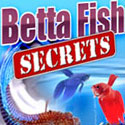

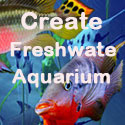
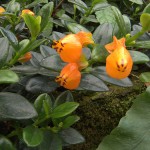
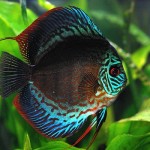

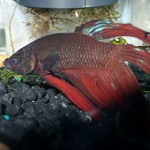



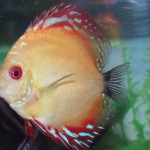
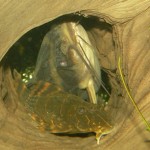
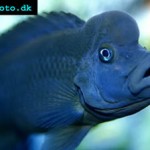
Leave a Reply